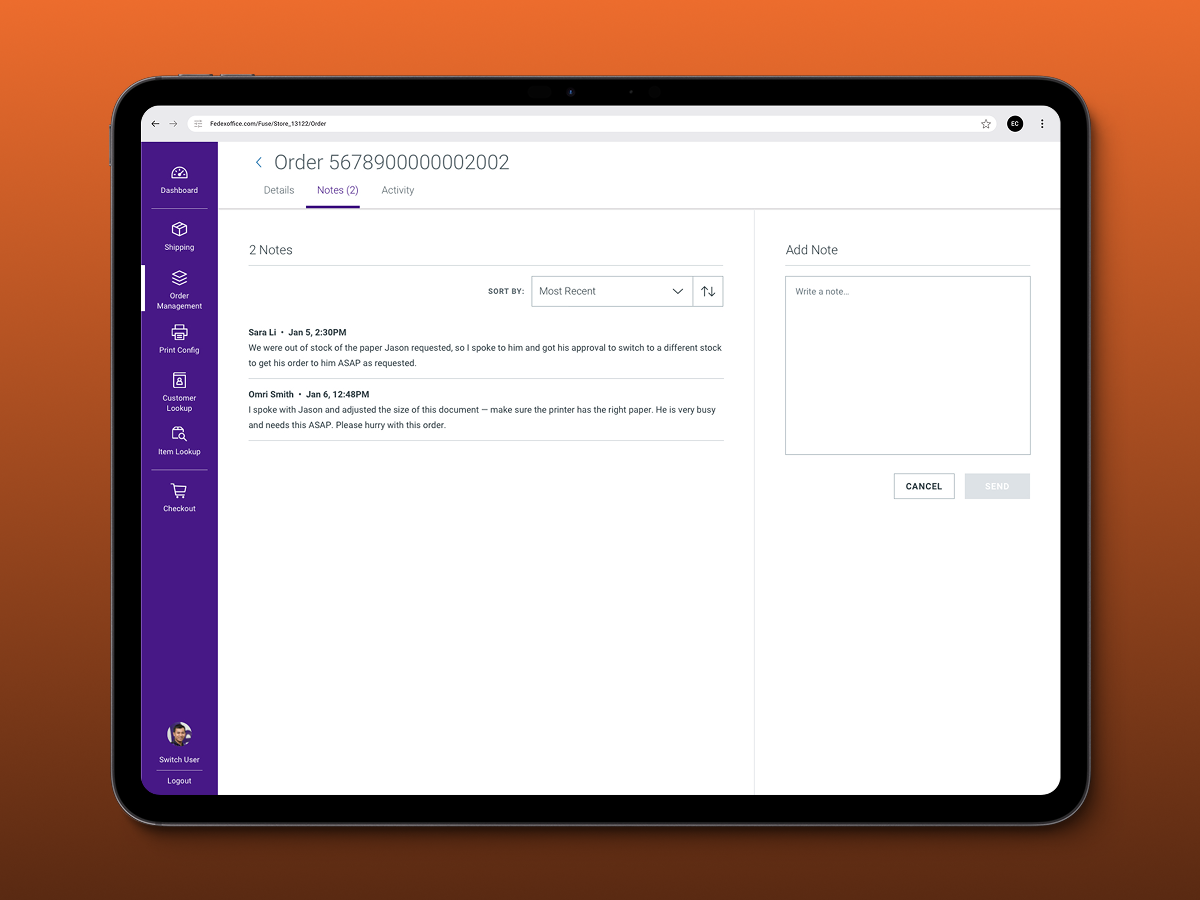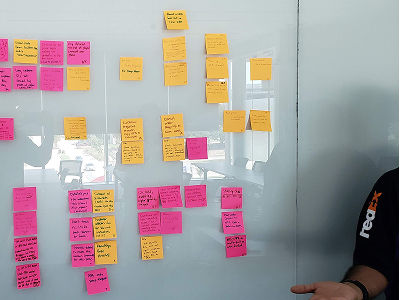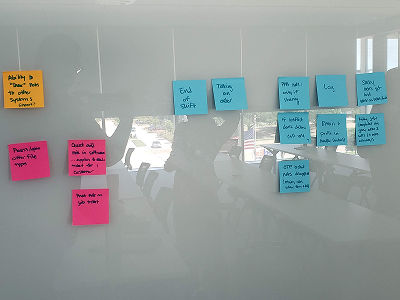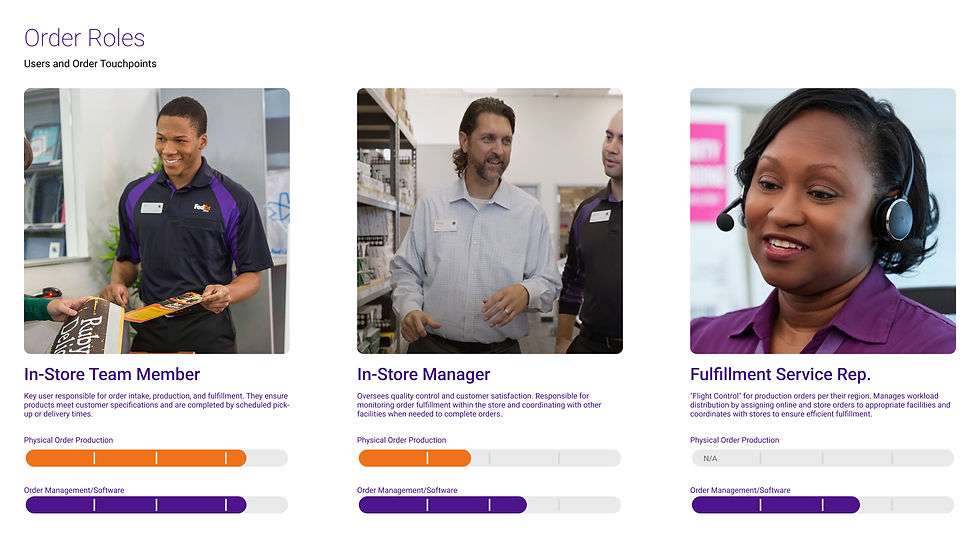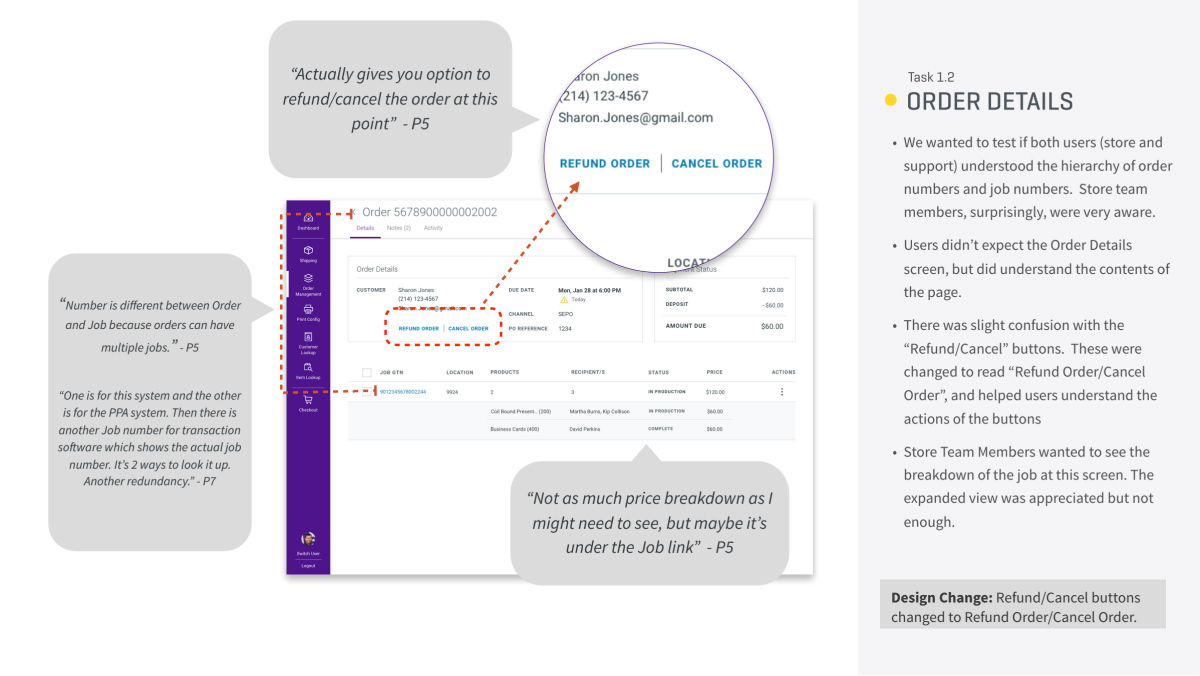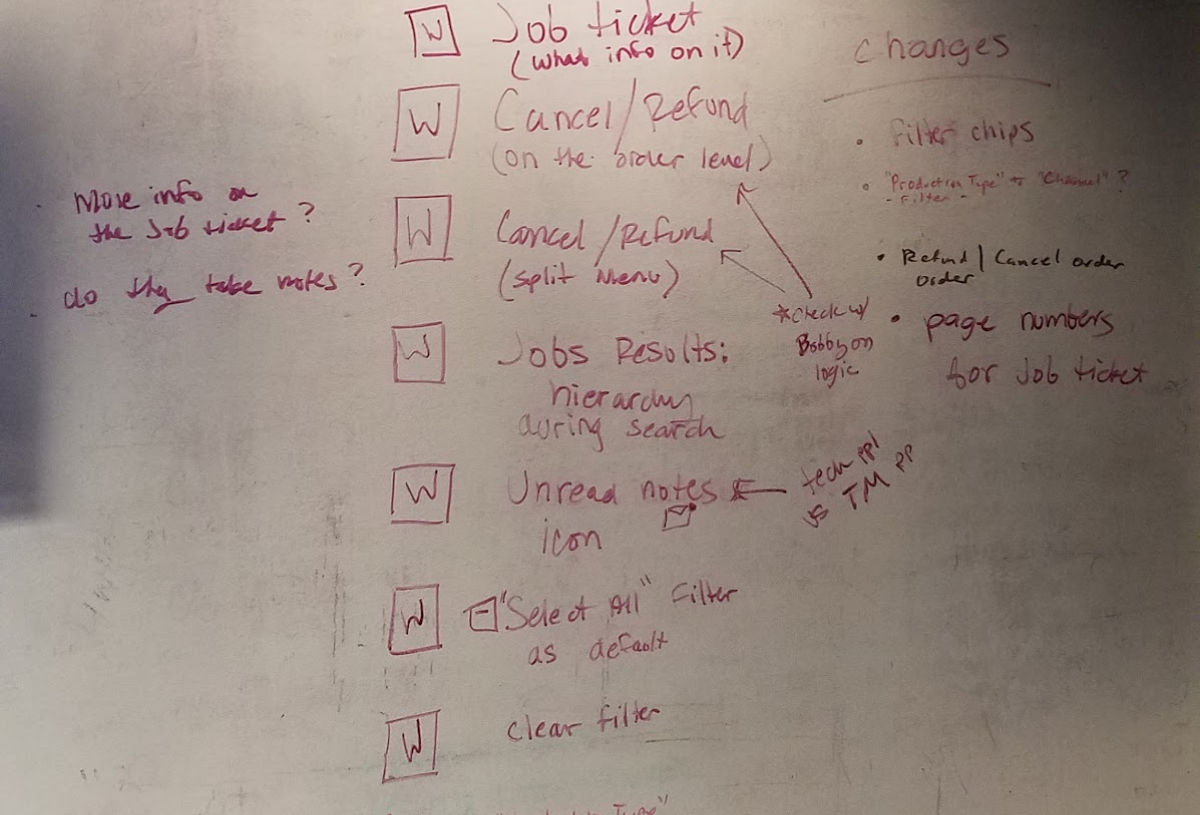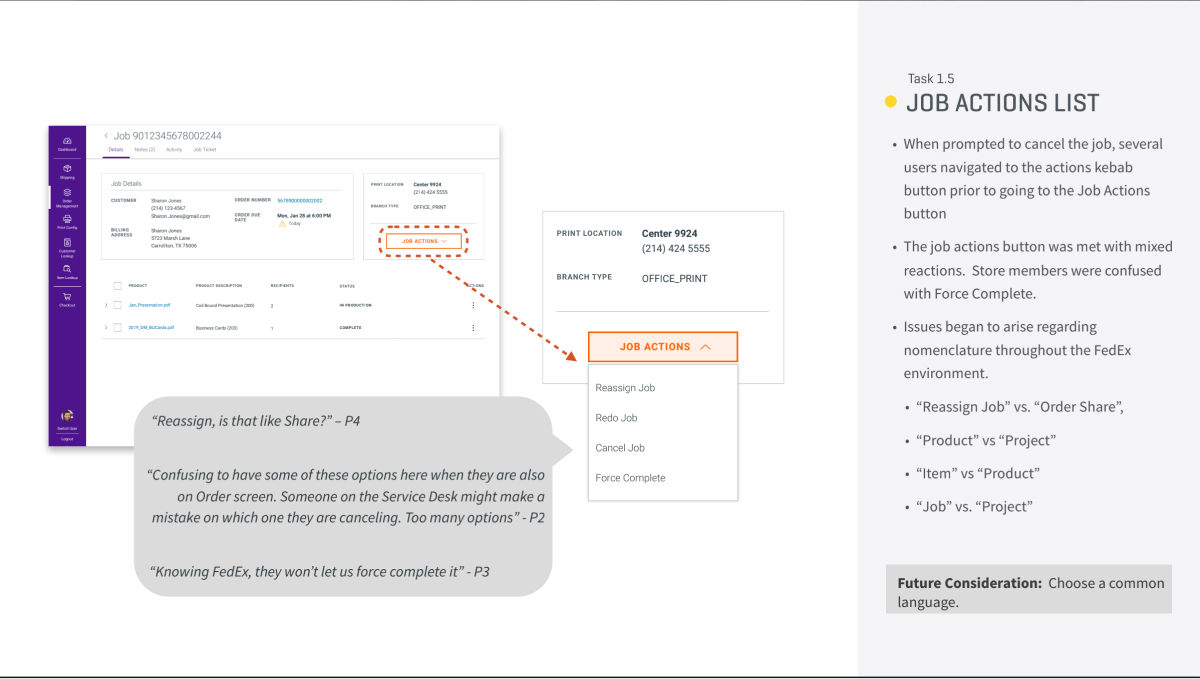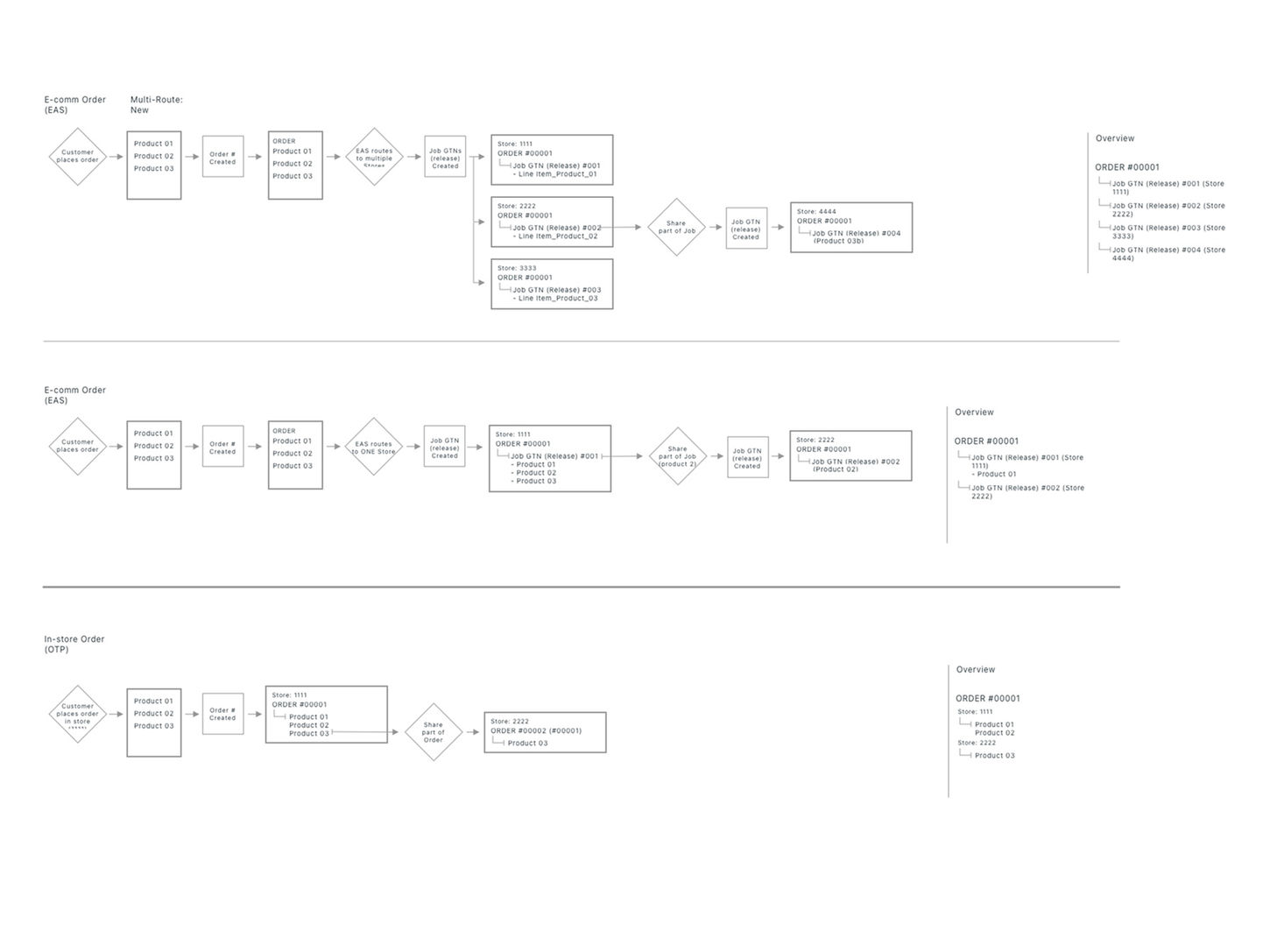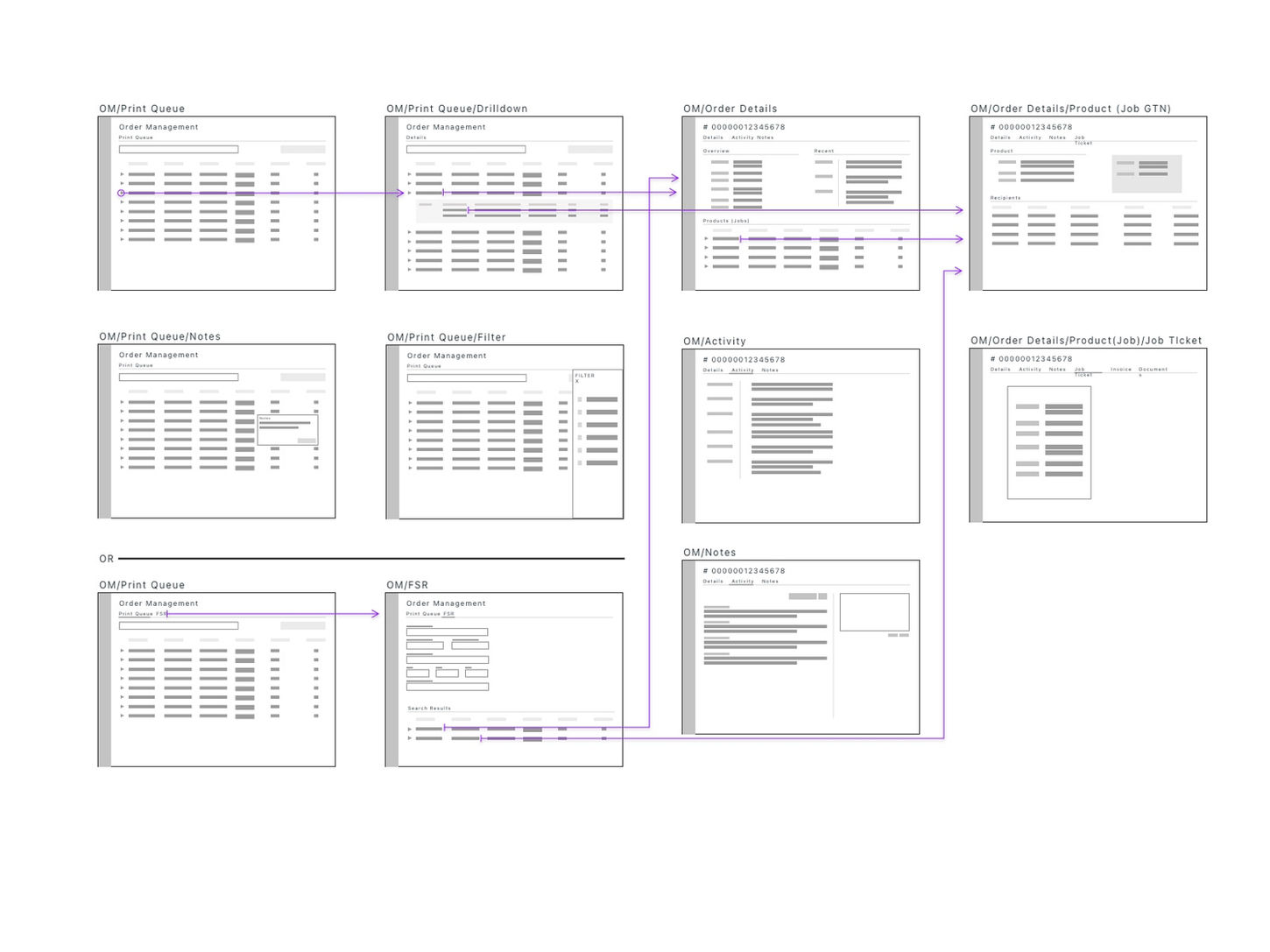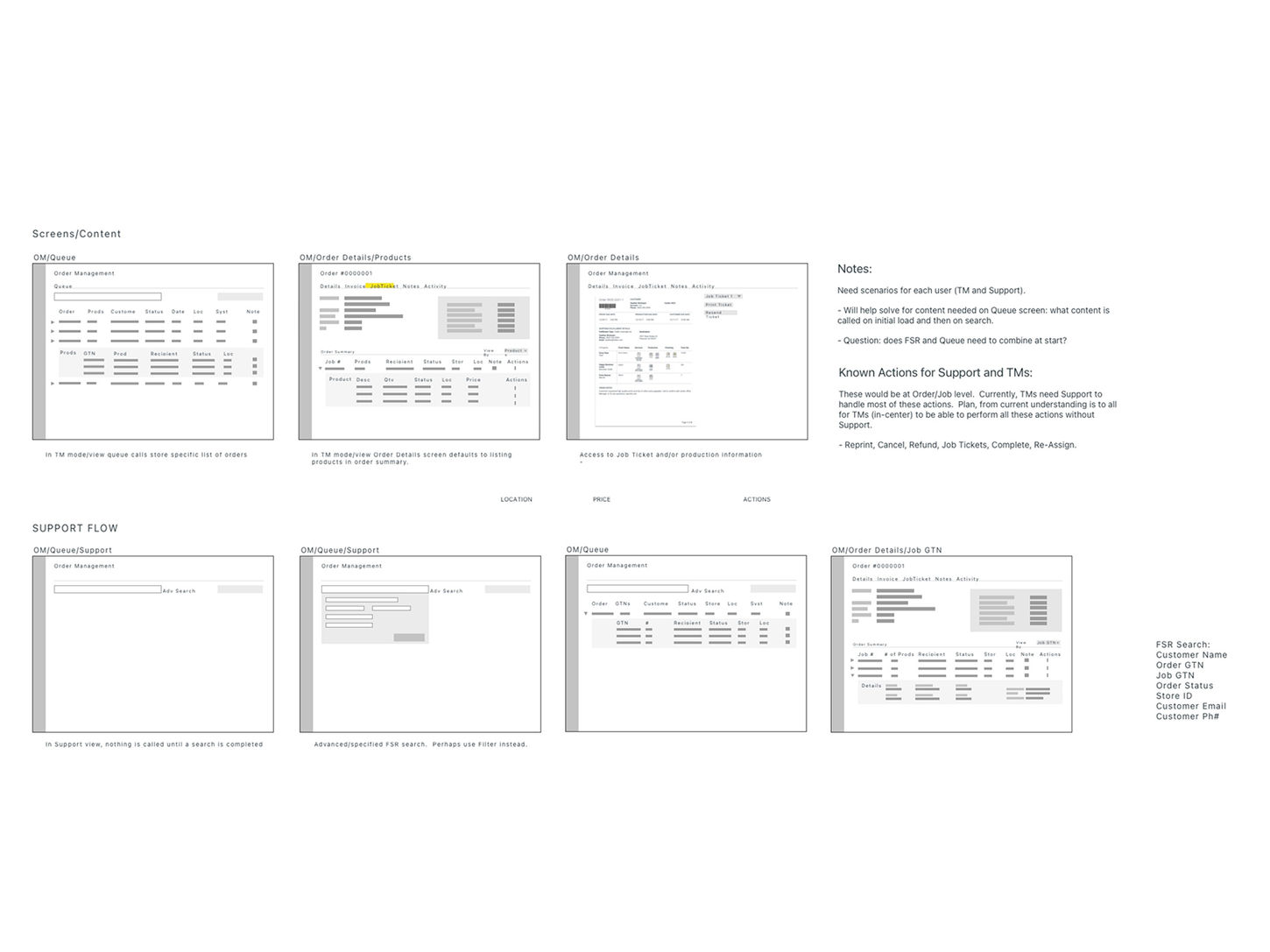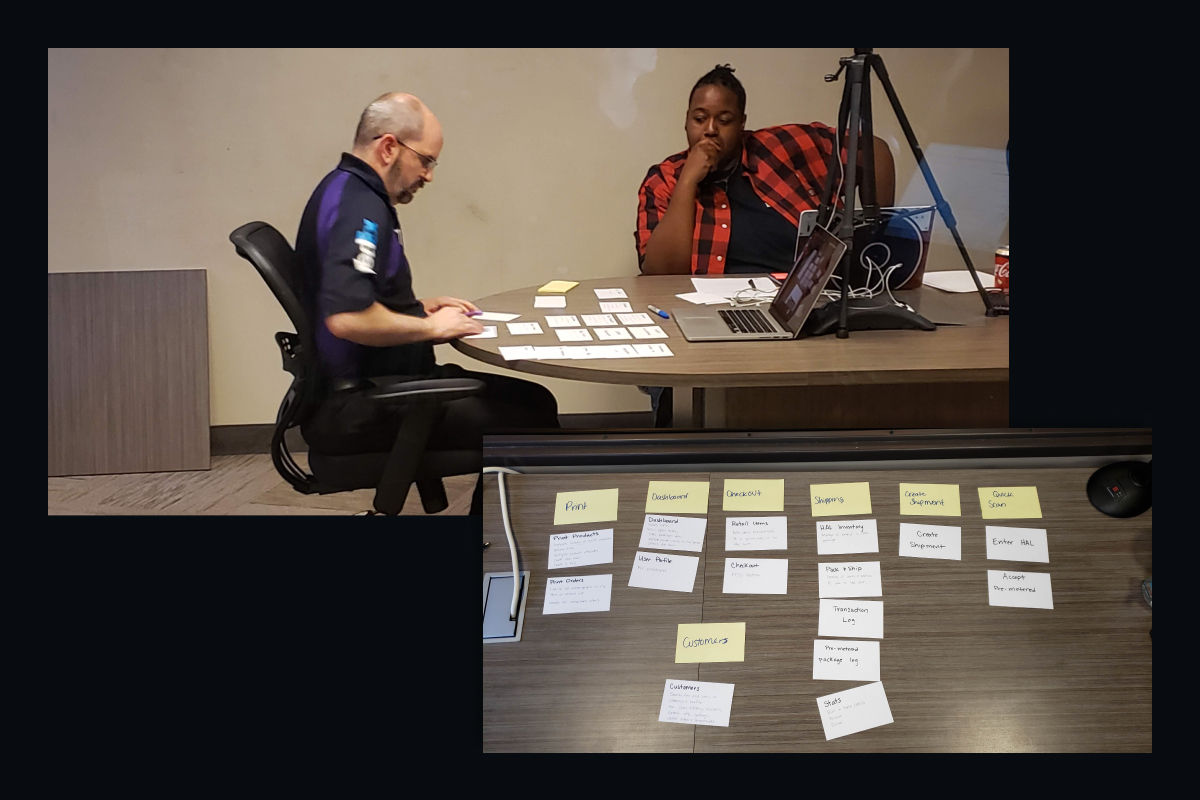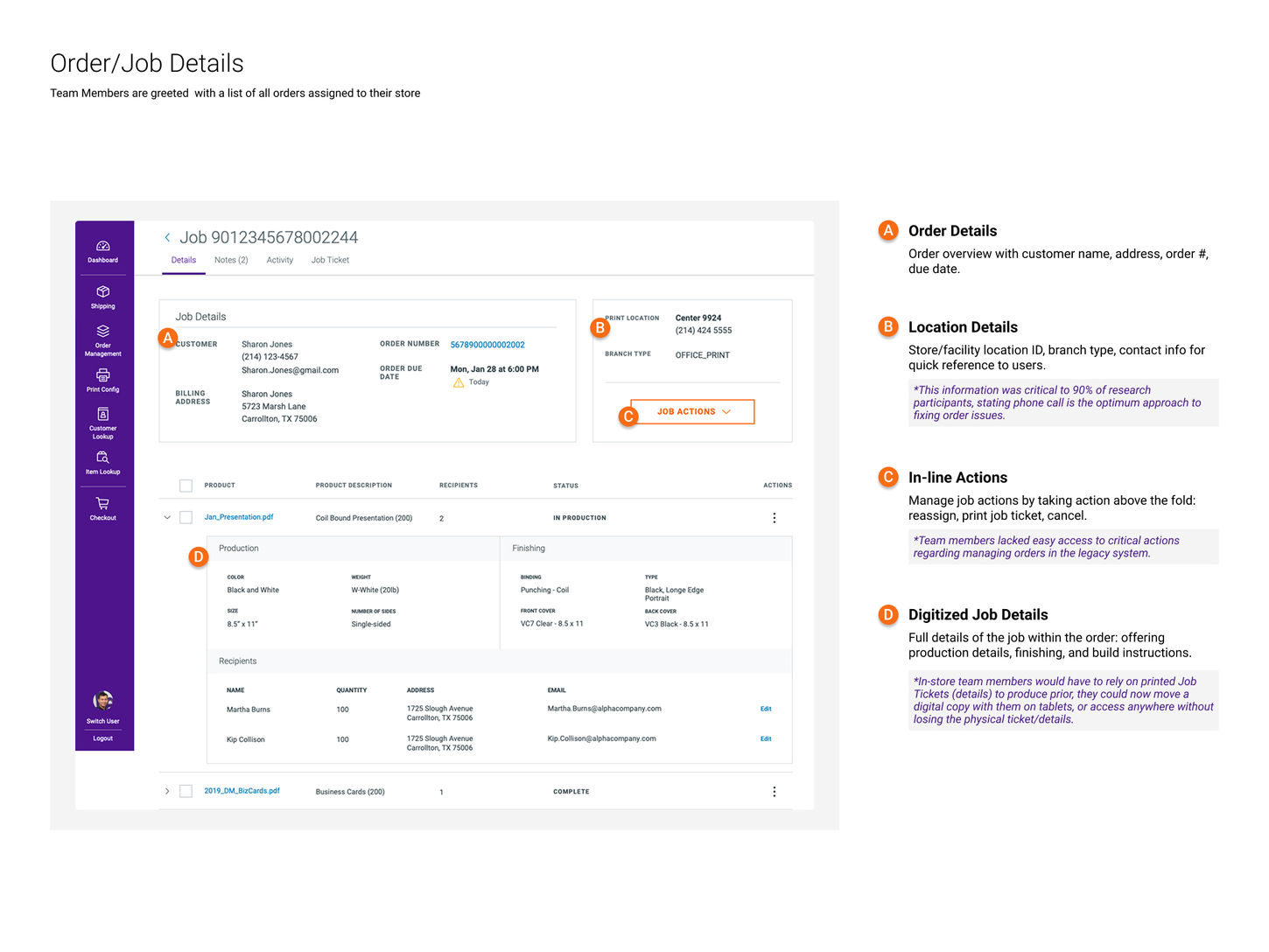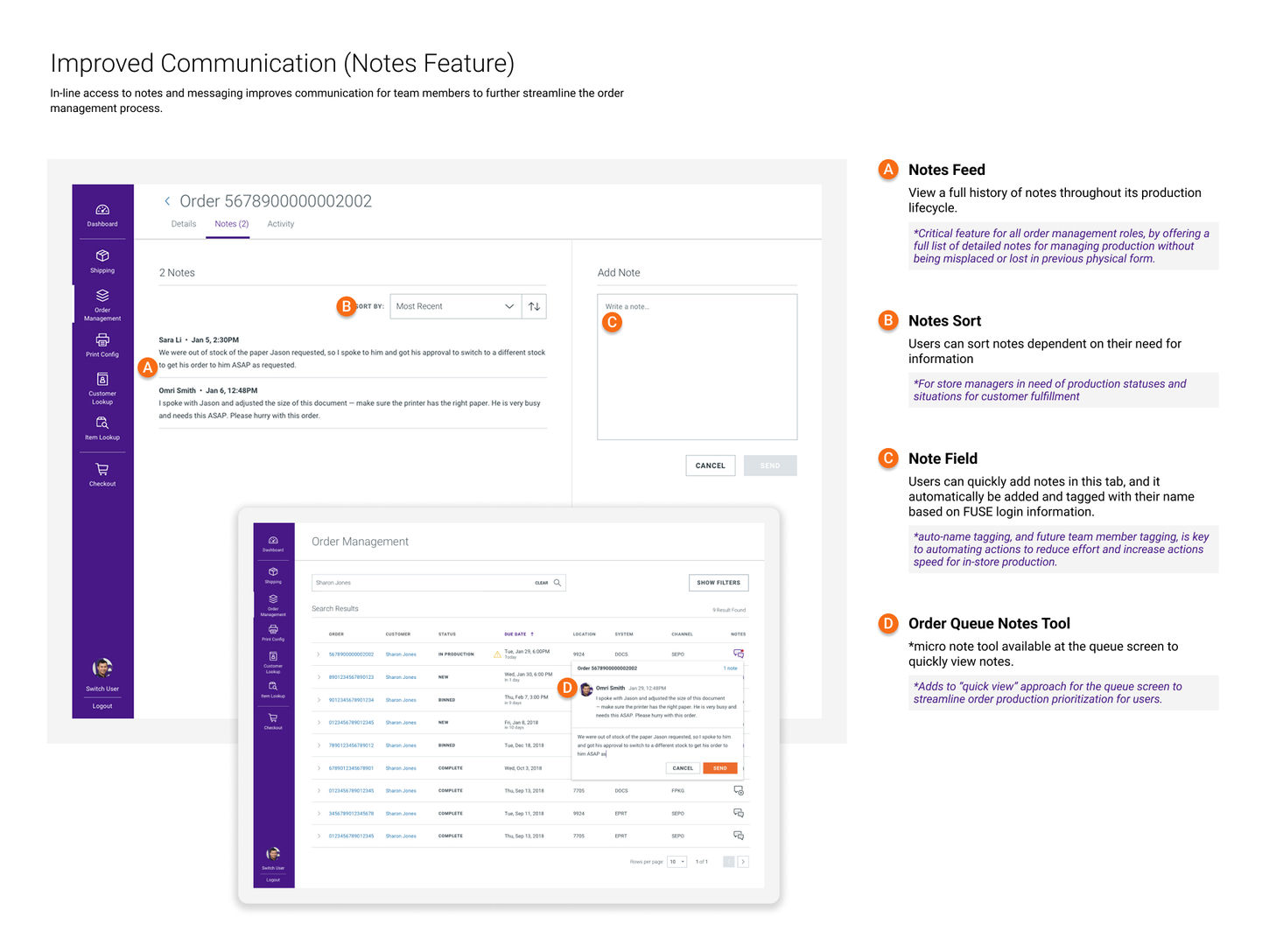FedEx Office | 2018-2020
Order Management System
FedEx Office's Order Management System (OMS) enhances retail operations by streamlining workflow efficiency and enhancing user experience. This enterprise solution consolidates multiple legacy systems into a unified platform, optimizing team productivity through simplified authentication, integrated applications, and improved visibility of production workflows and cross-team collaboration.

Project Overview
Fedex Office: Retail Transformation
In 2018, projekt202, the design agency I worked with, partnered with FedEx Office (FXO) to implement a UX-focused approach to modernizing their retail management system. This large-scale, multi-year initiative aimed to redesign, rebuild, and unify their aging and fragmented software, with the Order Management System (OMS) being one of the key services.
Order Management
FXO's objective for the OMS was to modernize the UI within their redesigned retail management system and significantly improve the digital order management experience to streamline and enhance the overall product creation and management process, ultimately improving product turnaround.

Understanding Order Workflows & Challenges
Four key objectives were define to guide discovery research to stay within scope of redesigning FedEx's OM software:
1) Understanding key users and their goals regarding order management,
2) Analyzing the current order management and product creation process, 3) identifying team needs and pain points within existing workflows, and
4) Examining how any and all software applications integrated with these processes.
Through iterative research with FedEx Office team members, we gathered valuable insights that drove our design decisions, ensuring the final solution would enhance order management while aligning with FedEx Office's broader transformation goals.
Applied Methodologies
Observing Users and Processes
In order to create a new digital experience, we focused on the primary user by conducting contexutal inquiries and interviews. A majority of our CIs were conducted upfront, prior to design; however, we returned to this methodology several times throughout the project to continually gather insights.
CI’s highlighted multiple needs from users:
-
In-store Team Members, primary order creators
-
In-store Managers
-
Fulfillment Service Representatives (FSR), FXO Headquarters.
Findings
Our discovery process revealed critical insights into FedEx Office's order management ecosystem through immersive research methods. By conducting in-store observations and headquarters visits, we identified several key findings:
System Fragmentation
Team members lost valuable time navigating between disconnected applications, creating significant workflow inefficiencies when managing orders across multiple platforms.
Communication Bottlenecks
The reliance on physical job tickets created information gaps between team members, particularly during shift changes or when orders moved between production stations.
Workflow Inconsistencies
Contextual inquiries revealed that team members developed unique workarounds to compensate for system limitations, creating inconsistent processes across different store locations.
Digital-Physical Disconnect
Workshop participants highlighted the cognitive burden of translating between digital order information and physical production requirements, which increased the potential for errors.
Cross-Role Collaboration Challenges
Our research uncovered friction points in how in-store team members coordinated with fulfillment service representatives, revealing opportunities to improve visibility and coordination.
Project Process

Project Overview
The Problem
Order Management System Integration & Communication Hurdles
FedEx Office team members were hindered to efficiently manage and fulfill orders in an efficient and streamlined manner due to fragmented software systems that integrated poorly within physical workflows, and reliance on manual documentation, resulting in communication gaps and delayed order completion.
Translating data into solutions
Our wireframing process began with mapping the order bundling structure to understand order identification and grouping. We created low-fidelity wireframes to quickly iterate on solutions with stakeholders and subject matter experts, then explored order ID systems to establish the architecture. Finally, we created draft architecture wireframes outlining screen layouts and user actions.
Designing Solutions
We worked in iterative cycles per user story to translate findings in our research into tangible solutions to improve the order management process.
Ideation
Outcome
A Unified Order Management Experience
We consolidated multiple applications used to fulfill orders into one system that greeted FXO team members with a single dashboard view displaying all orders for the store with the ability to navigate within a few short clicks; allowing them to access order details, status, instructions, and take necessary actions - all within one single interface that could be moved around the store within them via tablet, and not rely on multiple stations.




